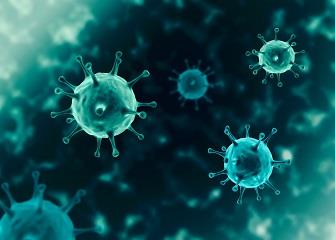
What are Isotopes?
An isotope is one of two or more atoms of the same chemical element with the same atomic number, occupying the same position on the periodic table and having almost identical chemical behavior, but with different atomic weights or mass numbers, which results in differences in mass spectral behavior, radioactive transitions, and physical properties (e.g., diffusion ability in the gaseous state).
Isotopes can be categorized into the following two types according to their stability and the physical properties of radioactivity:
Stable isotopes are isotopes of chemical elements that do not undergo radioactive decay or are not susceptible to radioactive decay. Stable isotopes, even if they do decay, cannot be measured because the half-life is too long. Stable isotopes are commonly used in the life sciences and chemical analysis.
Radioactive isotopes are nuclides whose nuclei are unstable and radioactive. Radioactive isotopes undergo radioactive decay and emit gamma rays and sub-atomic particles. If all isotopes of an element are radioactive, such as uranium, radium and radon.
Stable isotopes of elements have similar physicochemical properties and different intranuclear properties. Compared with radioisotopes, stable isotopes have the following characteristics, including excellent sensitivity, high measurement accuracy, no radiation and less hazardous, stable properties, stable signal values, multiple isotopes can be detected at one time, and recyclability.
Isotope Example
Carbon-13
Carbon-13 ( 13 C) is a naturally stable isotope of carbon with a nucleus containing six protons and seven neutrons and is one of the environmental isotopes. Because of differences in the uptake of13 C by plants and marine carbonates, it is possible to use these isotopic signatures in the earth sciences. Also Carbon-13 has a non-zero spin quantum number of 1/2, thus permitting the use of Carbon13 NMR to study the structure of carbon-containing materials. In addition, the Carbon-13 Urea Breath Test is a safe and highly accurate diagnostic tool for detecting the presence of Helicobacter pylori infection in the stomach.
Nitrogen-15
Nitrogen-15 isotope (15N) is a rare stable isotope of nitrogen. The two sources of Nitrogen-15 are positron emission from oxygen 15 and beta decay of carbon 15. Nitrogen-15 is often used in Nitrogen-15 NMR spectroscopy. Unlike the more abundant14 N,15 N has one-half the fractional nuclear spin, which provides the advantage of a narrower line width for NMR. In addition, N15 tracing is a technique commonly used to study the nitrogen cycle.
Deuterium
Deuterium, also known as heavy hydrogen and H-2, is a stable isotope of hydrogen. Its nucleus consists of a proton and a neutron. About 0.0156% of the hydrogen atoms in the Earth's seawater are deuterium, based on which the deuterium-hydrogen ratio is still an important research topic in astronomy and climatology. Deuterium is mainly prepared by heavy water electrolysis or liquid hydrogen vaporization at low temperature.
Oxygen-18
Oxygen-18 (18O ) is a natural, stable isotope of oxygen and one of the important environmental isotopes. 18O is an important precursor for the production of fluorodeoxyglucose (FDG) for positron emission tomography (PET).
Applications of Stable Isotopes
Stable isotope products have been widely used in biomedical fields such as disease research, diagnosis and drug efficacy evaluation and new drug development.
PET
Positron Emission Tomography (PET), as the most advanced nuclear medicine imaging technology, the raw material of its tracer agent is 18O water, which is injected into the human body for tomography, data collection and imaging for diagnosis and analysis.PET, as a new technology that can display the metabolism of biomolecules, receptor and neuromediators' activities in the living body, is able to diagnose the diseases in an early, sensitive and accurate way.
Protein Structure and Function Research
Nuclear magnetic resonance (NMR) and mass spectrometry (MS) spectroscopy often require stable isotope integration assistance in the study of the structure and function of different protein populations, such as isotope coded affinity labeling method (ICATTM), stable isotope labeling of amino acids in cell culture (SILAC), and absolute quantitative analysis of target proteins (AQUATM) based on stable isotope labeled proteomics research methods.
HP Breath Test
Breath test with the isotope 13C-urea (referred to as 13C-UBT), can detect the gastric epithelium of Helicobacter pylori (HP). HP is the main cause of gastritis, gastric ulcers and even gastric cancer. The most reliable way to detect HP is to use this non-invasive 13C-UBT method, which can infer H. pylori in the stomach by detecting the 13C/12C isotope ratio in the exhaled gas after oral administration of 13C-urea.
Drug Metabolism Study
The study of drug metabolism in the body is a very critical process for the development of new drugs, and the elements of carbon, nitrogen and oxygen are essential elements in the structure of most drugs. In metabolism research, the use of 13C, 15N, 18O for isotope labeling, and thus further tracer research, can be sensitive, accurate, and fast to figure out the law of the activities of the drug in the body, the metabolic pathway, and thus for the development of new drugs, guiding the application of the drug has a very important significance. Through mass spectrometry, the metabolite labeling of stable isotope tracers can be tracked to further reveal their metabolic pathways.
Deuterated Drug Development
Theoretically, the addition of heavy hydrogen to a small molecule can make the drug's action last longer and can improve the pharmacokinetics and toxicity profile of the drug itself. For example, Deutetrabenazine is the first deuterium substituted drug approved in the world for the treatment of chorea associated with Huntington's disease and late-onset dyskinesia in adults. Deutetrabenazine exhibits a favorable pharmacokinetic profile compared to Tetrabenazine and has demonstrated efficacy and an acceptable safety and tolerability profile in patients with Huntington's chorea (HD) and adult delayed movement disorders.
Leave a Reply
Related Products
You Might Like Also

Lipids Used in COVID-19 mRNA Vaccines
The COVID-19 pandemic has killed millions of people. Vaccines certainly are the most outstanding ways to prevent major diseases and death, though they haven't eliminated infections. At present, the most effective vaccine is the mRNA vaccine developed by Pfizer-BioNTech and Moderna. Before that, mRNA technology stopped in the lab phase. Read More

Mechanism of Action of Paclitaxel
Paclitaxel is a natural anticancer drug with the molecular formula C47H51NO14. It has been widely used in the clinical treatment of breast cancer, ovarian cancer, and certain head and neck cancers, as well as lung cancer. Its novel and complex chemical structure, extensive and significant biological activity, unique mechanism of action, and scarce natural resources have gained immense favor among botanists, chemists, pharmacologists, and molecular biologists, making it a prominent anticancer star and research focus in the latter half of the 20th century. Read More

Fermented Raw Material for Cosmetic Skincare Product
The cosmetics and skincare industry is constantly evolving and a recent trend that has emerged is the use of fermented ingredients in skincare products. Fermentation is a microbial metabolic process that has been used for centuries in food and beverage production, and now it has been extended to the cosmetic industry. Read More

Hypoglycemic Functional Factors in Natural Products and Their Mechanisms of Action
Diabetes is a common clinical disease, and with the improvement of living standards, an increase in the number of obese people, and the intensification of aging populations, the incidence of diabetes is increasing year by year. Read More

Nanobodies Definition, Structure, Advantages and Applications
Nanobodies are the smallest functional single-domain antibodies known to be able to stably bind to antigens, and have unique structural and functional advantages. The molecular weight of nanobodies is only 12-15 kDa, which retains the antigen binding ability of traditional antibodies. However, nanobodies have higher solubility and stability, and have unique advantages in biological function and biochemical characteristics. Therefore, nanobodies have shown good control effects in disease diagnosis, cancer and infectious diseases. Read More

New Technology to Promote Drug Development-AI Technology
For a long time, the research and development of each new drug has faced the challenges of high cost and long cycle. In response to these challenges, major pharmaceutical companies have shifted from targeting common diseases to developing drugs for specific diseases. At the same time, these companies are constantly looking for new technologies for new drug development, such as high-throughput screening technology, DNA encoded chemical library, computer-aided drug discovery, and artificial intelligence. Read More










